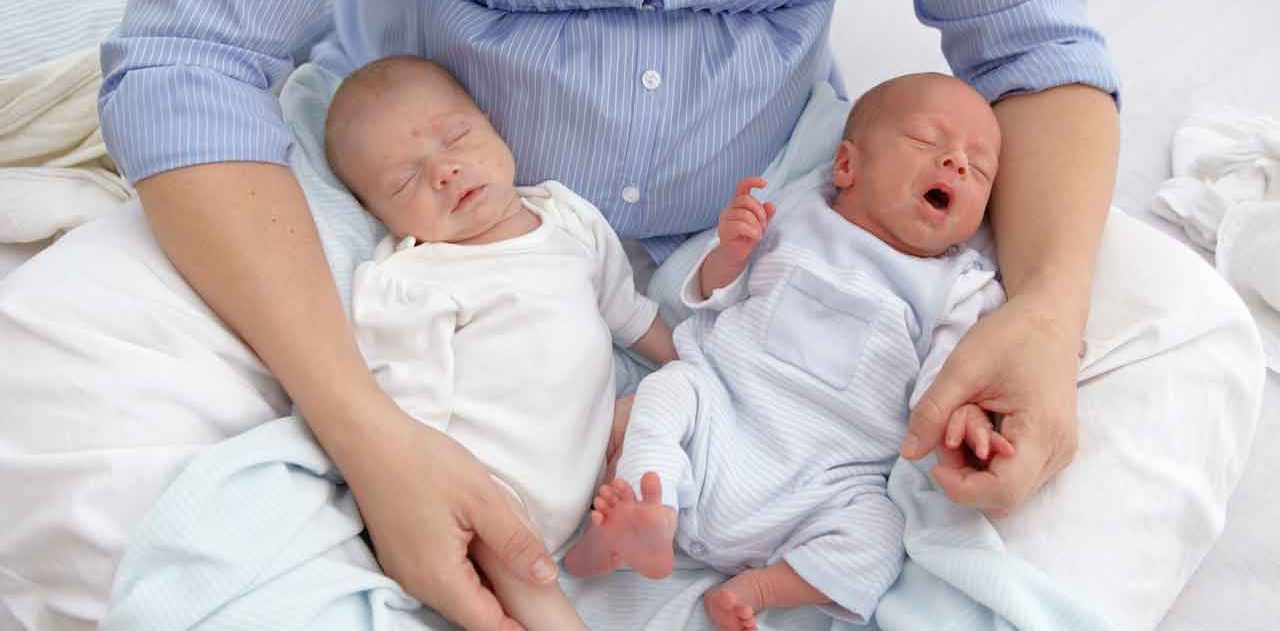Is Vaginal Delivery Safe for Twins?

Study shows that surgery is not always necessary for twin births.
The rate of twin pregnancies in the United States is increasing.
In 1915, the earliest year for which reliable data is available, pregnancies of twins or higher multiples were about 2 percent of all pregnancies in the United States. But in the second half of the twentieth century, those numbers began to rise. By 2009 one in every 30 babies born was a twin. By 2014, the rate of twin births had reached its highest recorded point, with 33.9 twins born for every 1,000 births in the United States, a change which is generally attributed to the increased use of fertility treatments.
During the same period, the rate of cesarean delivery also increased in the U.S., with the American Congress of Obstetrics and Gynecology (ACOG) reporting that in 2011 one in every three women who gave birth in the U.S. did so by cesarean delivery.
YOU MIGHT ALSO LIKE: Our Pregnancy Week by Week Section
While there are many reasons women may have cesarean deliveries, they are almost always recommended in the case of twin pregnancies. This is partly due to a study known as the Term Breech Trial, which found that cesarean delivery was safer than vaginal delivery for the 3 to 4 percent of babies who present in the breech, or head up, position during labor.
After the Term Breech Trial, many clinical practices began planning cesarean delivery for breech babies, and planned cesarean delivery became the default recommendation for twin pregnancies, which are more likely to have one of the two babies in the breech position than single pregnancies.
But all this surgery may not be necessary, or even the healthiest choice for mothers and babies. The report released by ACOG noted that “the rapid increase in cesarean birth... without clear evidence of concomitant decreases in maternal or neonatal morbidity or mortality raises significant concern that cesarean delivery is overused.”
For twin pregnancies, a study published in the New England Journal of Medicine found that in many cases, vaginal delivery may be just as safe as cesarean.
The study, which was conducted between 2003 and 2011, followed 2,804 women who delivered twin babies at 106 different medical centers in 25 countries. Participants were randomly assigned to either scheduled cesarean or induced vaginal delivery between 37 weeks 5 days and 38 weeks 6 days of gestation.
To ensure the safety of both mothers and babies, all the deliveries were overseen by a qualified obstetrician, and certain conditions had to be met for the vaginal deliveries to proceed as planned. The first baby had to be in the head-down position, and if there were any signs at any point during either the last weeks of pregnancy or during labor that vaginal delivery would be dangerous, the woman was transferred to a cesarean delivery.
YOU MIGHT ALSO LIKE: Are Pregnant Women in the U.S. in Danger?
After birth, researchers followed participants for 28 days to look for negative outcomes. The first metric used was the survival of both twins and the mother, but they also checked for outcomes including birth trauma and broken bones in the infants, maternal hemorrhage, low Apgar scores after birth, seizures, septicemia, the need for a hysterectomy, respiratory distress, and the need for a blood transfusion or respirator.
The researchers then followed up with participants and their twins after two years to look at long-term outcomes, including neurodevelopment of the babies and incontinence in the mother. They also asked participants about their level of satisfaction with the method of delivery and incidences of postpartum depression.
The study found that there was no significant difference in negative outcomes between the two groups. The second twin born was more likely to experience physical trauma or developmental problems immediately post-birth, but that was true across the study, not just for babies who were delivered vaginally.
Researchers concluded that when certain conditions were met, a planned vaginal delivery could be just as safe for twins as planned cesarean delivery.
These conditions include the presence of a skilled obstetrician, the overall health of the mother and babies, the ability to switch to an emergency cesarean delivery if necessary, and the head-down position of the first twin.
Statements made by ACOG agree with these findings. Their recommendations for twin pregnancies state that, “In some cases, twins can be delivered by vaginal birth. How your babies are born depends on … [the] number of babies and the position, weight, and health of each baby; your health and how your labor is going; [and] your obstetrician’s experience.”
Updated:
April 07, 2020
Reviewed By:
Janet O’Dell, RN